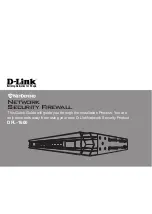
Chapter 2
Installing Device
RUGGEDCOM RS416
Installation Guide
18
Cabling Recommendations
RS232 Console Port
Connect a PC or terminal directly to the RS232 console port to access the boot-time control and ROS interfaces.
The console port provides access to ROS's console and Web interfaces.
IMPORTANT!
The console port is intended to be used only as a temporary connection during initial configuration or
troubleshooting.
Connection to the console port is made using an RJ45-to-DB9 console cable. The following is the pin-out for the
console port:
8
1
Figure 16: RJ45 Console Port Pin Configuration
Pin
RJ45 Male
DB9
Female
Name
Description
1
6
DSR
a
Data Set Ready
2
1
Reserved (Do Not Connect)
3
4
DTR
a
Data Terminal Ready
4
5
GND
Signal Ground
5
2
RxD
Receive Data (to DTE)
6
3
TxD
Transmit Data (from DTE)
7
8
CTS
b
Clear to Send
8
7
RTS
b
Read to Send
1
9
RI
c
Ring Indicator
a
The DSR, DCD and DTR pins are connected together internally.
b
The CTS and RTS pins are connected together internally.
c
RI is not connected.
Communication Ports
Connect any of the available Ethernet ports on the device to a management switch and access the ROS console
and Web interfaces via the device's IP address. For more information about available ports, refer to
Section 2.6
Cabling Recommendations
All copper Ethernet ports on RUGGEDCOM products include transient suppression circuitry to protect against
damage from electrical transients and conform with IEC 61850-3 and IEEE 1613 Class 1 standards. This means
that during a transient electrical event, communications errors or interruptions may occur, but recovery is
automatic.
Siemens also does not recommend using copper Ethernet ports to interface with devices in the field across
distances that could produce high levels of ground potential rise (i.e. greater than 2500 V), during line-to-ground
fault conditions.
















































